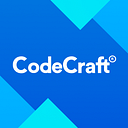In the first chapter of this roundup about Kubernetes and its significance in the DevOps space, we discussed an overview of the tech as well as its correlation to Dockers and Containers. We also surveyed how Kubernetes work in tandem with containers to deploy apps faster and with greater efficacy. To know more about the subject, refer to this link.
As we go further into the topic, let us take a look at the architecture that this technology is built on. This article is a runthrough of the Kubernetes architecture and its top components explained.
What are the top components of the Kubernetes architecture?
Kubernetes are primarily used to manage and scale the deployment of applications and have a huge impact on accelerating the continuous integration and continuous development process of the app. Kubernetes create environments to facilitate this which in turn create clusters to run containerized applications via nodes. Broadly speaking, the Kubernetes architecture consists of three major branches. These include:
- Pods- The base unit which manages containerised apps
- Kubernetes Data Plane- Units that manage containerized workloads
- Kubernetes Control Plane- This contains the API workload and is responsible for managing clusters and workloads.
NOTE: Since the local storage ends when a pod shuts down, Kubernetes offers a mechanism to streamline this process via a persistent storage mechanism which allows the user to store data beyond the lifecycle of the cell.
Top 6 Elements of the Kubernetes Architecture Explained!
Now that you have a high level understanding of the components of the Kubernetes architecture and how they work in synchronization to streamline the CI/CD process, let us further take a look at some of the elements that make this procedure happen. Let us have a look at this in the upcoming segments of this article:
Pod
As mentioned before in the article, Pods are the base unit of the Kubernetes architecture which plays a major role in managing containerised applications. It is the smallest functional unit which supports multiple containers on a single pod through a scalable approach. Some primary features about them are that they generally follow a one-container-per-pod architecture approach for ease of integration in use cases. They also create a new IP address on recreation.
Deployment
The deployment feature on Kubernetes is used to integrate and manage the deployment process dynamically. Its primary function is to modify or create instances on pods to scale their replicas in a staged and easy to control manner. It is essentially a resource object that rolls out declarative updates using `Kubectl`.
Services
The Services element of Kubernetes assists in providing all the internal and external communication that is necessary for deployment. It acts as a pass which spans over nodes to create a static IP address for every individual set of pods functioning within the Kubernetes architecture. Services are an abstraction which works to simplify container management by defining a policy of accession.
Ingress
The primary functionality of Ingress is to route traffic within the architecture into clusters by providing HTTP/HTTPS accessibility. Put simply, it is a routing rule which acts as the intermediary between the clients requests and the Kubernetes services. Ingress acts as a load controller which simplifies the complexity of traffic flowing from outside the platform to the internal pods.
ConfigMap
ConfigMap is an API object that is used to configure the layout of the app using key value pairs of strings while establishing runtime parameters on the Kubernetes platform. You can also create a 12 factor app which lets you change the Kubernetes platform environment in a dynamic manner.
Secret
In the last leg of this article, we’ll have a glance at what secrets are on Kubernetes. Secrets are essentially nothing but sensitive or encoded data which is stored inside an object. They use a base 64 encoded format to store encoded data on the API server.
Conclusion
Our experts at CodeCraft predict that Kubernetes may very well be on the way to becoming the future of cloud computing and CI/CD and we hope that our insights have provided you with a comprehensive understanding of the tech stack and how it works. If there is anything more you’d like to know about the subject, please feel free to let us know through our social handles and we’ll see how best we can answer your questions.
Resources- Kubernetes Official Documentation
If you’d like to know more about Kubernetes, please refer to the official documentation linked here.
